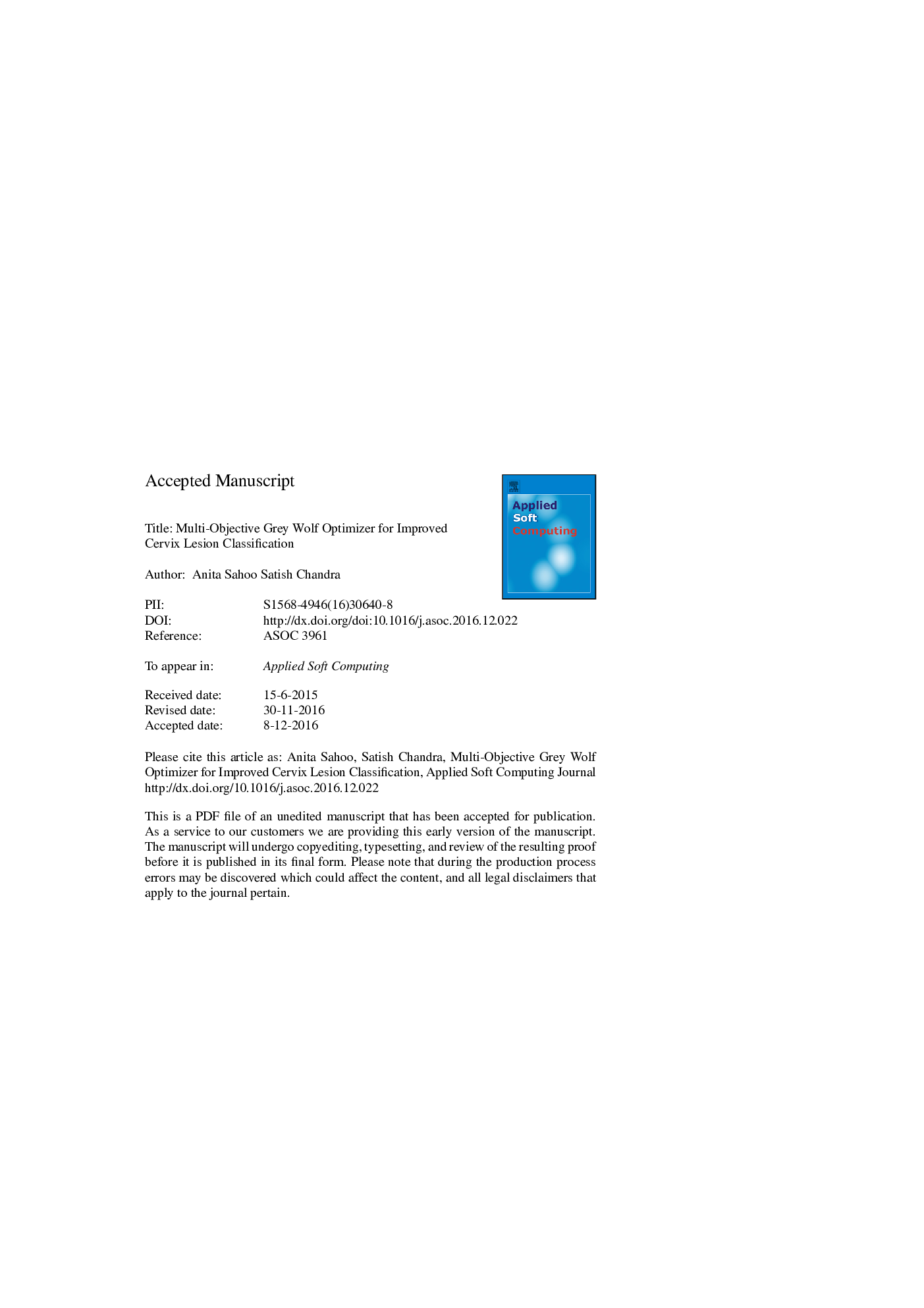| Article ID | Journal | Published Year | Pages | File Type |
|---|---|---|---|---|
| 4963450 | Applied Soft Computing | 2017 | 34 Pages |
Abstract
Cervical cancer is one of the vital and most frequent cancers, but can be cured effectively if diagnosed in the early stage. This is a novel effort towards effective characterization of cervix lesions from contrast enhanced CT-Scan images to provide a reliable and objective discrimination between benign and malignant lesions. Performance of such classification models mostly depends on features used to represent samples in a training dataset. Selection of optimal feature subset here is NP-hard; where, randomized algorithms do better. In this paper, Grey Wolf Optimizer (GWO), which is a population based meta-heuristic inspired by the leadership hierarchy and hunting mechanism of grey wolves has been utilized for feature selection. The traditional GWO is applicable for continuous single objective optimization problems. Since, feature selection is inherently multi-objective; this paper proposes two different approaches for multi-objective binary GWO algorithms. One is a scalarized approach to multi-objective GWO (MOGWO) and the other is a Non-dominated Sorting based GWO (NSGWO). These are used for wrapper based feature selection that selects optimal textural feature subset for improved classification of cervix lesions. For experiments, contrast enhanced CT-Scan (CECT) images of 62 patients have been used, where all lesions had been recommended for surgical biopsy by specialist. Gray-level co-occurrence matrix based texture features are extracted from two-level decomposition of wavelet coefficients of cervix regions extracted from CECT images. The results of proposed approaches are compared with mostly used meta-heuristics such as genetic algorithm (GA) and firefly algorithm (FA) for multi-objective optimization. With better diversification and intensification, GWO obtains Pareto solutions, which dominate the solutions obtained by GA and FA when assessed on the utilized cervix lesion cases. Cervix lesions are up to 91% accurately classified as benign and malignant with only five features selected by NSGWO. A two-tailed t-test was conducted by hypothesizing the mean F-score obtained by the proposed NSGWO method at significance level = 0.05. This confirms that NSGWO performs significantly better than other methods for the real cervix lesion dataset in hand. Further experiments were conducted on high dimensional microarray gene expression datasets collected online. The results demonstrate that the proposed method performs significantly better than other methods selecting relevant genes for high-dimensional, multi-category cancer diagnosis with an average of 12.82% improvement in F-score value.
Keywords
Related Topics
Physical Sciences and Engineering
Computer Science
Computer Science Applications
Authors
Anita Sahoo, Satish Chandra,
